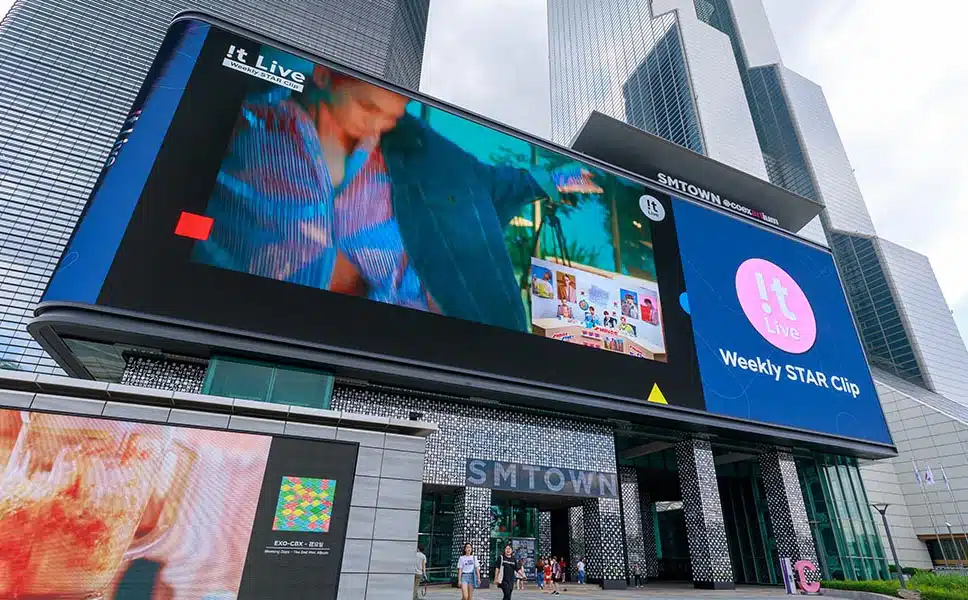Outdoor advertising has evolved in order to catch the attention of people who are on the go in today’s fast-paced world. LED Digital signs are the pinnacle of this change. These bright, moving screens have changed the look of cities all over the world and give advertisers more ways than ever to get their message campaigns out. But as concern for the environment grows, it’s important to look into how eco-friendly these technological wonders are. This blog post talks about how LED digital billboards affect the environment by looking at how much energy they use, what materials they are made of, and their total carbon footprint. It also talks about the good things that LED billboards do for the environment.
Using Less Energy is a Big Step Forward.
One of the best features about the state-of-the-art LED signs for the environment is that they use far less energy. LED (Light Emitting Diode) technology, in general, uses a lot less electricity than the old-style lighting systems that were used in billboards. This is because LEDs are naturally efficient. They produce light more efficiently without generating as much heat as incandescent or halogen bulbs, so they need less energy to stay bright. Also, advances in LED digital billboards have led to the creation of smart systems that can automatically control the brightness of the billboards based on the time of day or ambient light. This saves even more power during the day or in cities with lots of lights.
Longevity and Materials That Last
The materials that are used to make LED billboards are another way that they are better for the earth. A lot of LED digital displays are made from materials that can be recycled, which cuts down on the waste that comes from making them and throwing them away. An additional benefit is that LEDs last a lot longer than standard billboard lighting options. Because LED digital billboards last so long, they need to be changed less often. Over time, this means less waste and damage to the environment during production.
Thoughts on the Carbon Footprint
To figure out what LED billboards’ total carbon footprint is, you have to look at both their direct and secondary effects on the environment. LED signs don’t directly release any pollutants, and because they use less energy, power plants release fewer greenhouse gasses. And because these billboards are messaging digitally, they don’t need real replacement materials like paper or vinyl, which are used in regular billboards and have environmental costs when they are made, shipped, and thrown away.
However, it’s important to note that LED signs do produce carbon emissions when they are built and used, though not as much as some other options. Even though the industry is improving, it still needs energy and resources. Of course, the electricity used to power LED digital signs may add to their carbon footprint if it is not derived from renewable sources.

LED Billboards and Picking a Spot
LED digital billboards and picking a spot isn’t just about getting the most views and people to see them; it’s also about what’s best for the earth. It is possible to make LED billboards even less harmful to the environment by strategically putting them in places where they can work best, like places with minimal light pollution or places where they can be powered by clean energy sources. Putting outdoor LED billboards in places where they can help the community the most, like with emergency alerts or public service announcements, can also increase their total value and make up for the damage they do to the environment. Location also counts, mastering the impact of the location of the LED billboard for optimal success.
Moving Towards a Greener Future
The shift towards LED digital billboard advertising, represents a significant step forward in reducing the environmental impact of outdoor advertising. The benefits LED billboards offer in terms of energy efficiency, use of sustainable materials, and reduced carbon footprint are substantial. Moreover, ongoing LED Digital Billboard Innovations continue to enhance their eco-friendliness, with research and development focused on improving energy efficiency, recyclability, and operational sustainability.
As the technology progresses, the potential for integrating solar panels or other renewable energy sources with LED billboards could further revolutionize their environmental standing, making them a truly green form of advertising. Moreover, the industry’s focus on sustainability extends beyond the billboards themselves, with companies increasingly committed to eco-friendly practices throughout their operations.
Balancing Innovation and Sustainability: The Eco-Friendly Future of LED Digital Billboards
While no technology is without environmental impact, LED digital billboards represent a significant advancement in combining advertising efficacy with environmental responsibility. By continuously improving energy efficiency, utilizing sustainable materials, and carefully considering the placement and operation of these digital displays, the outdoor advertising industry can continue to minimize its ecological footprint. As we move forward, the integration of LED billboards into our urban environments can be seen not just as a marketing innovation, but as a step towards a more sustainable future.

